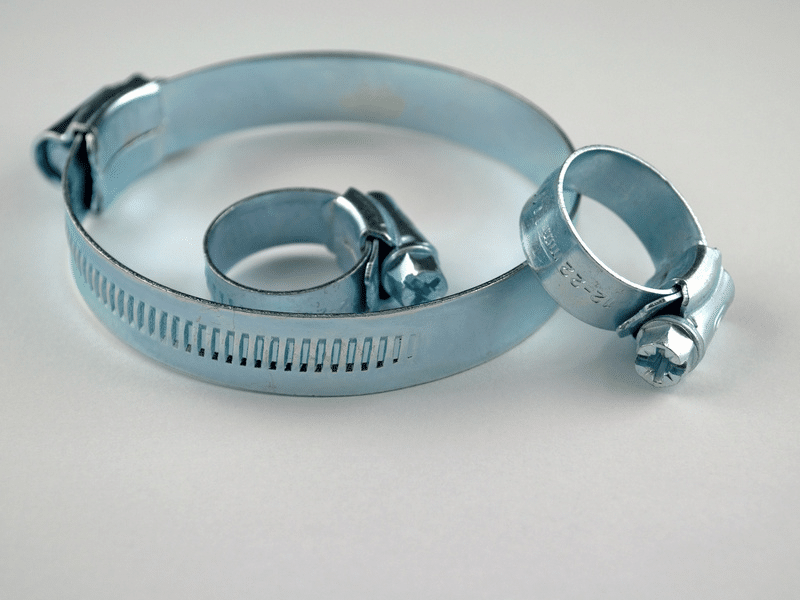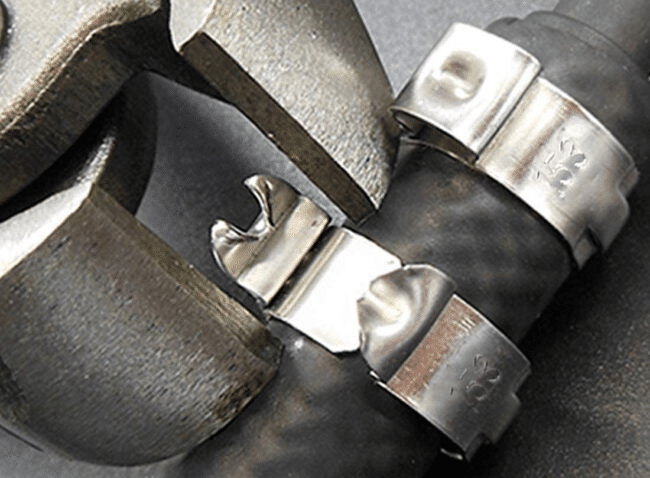
Hose clamps are vital in various industrial, automotive, and household systems, particularly in securing hydraulic hoses. These uncomplicated devices are purpose-built to firmly hold hoses in position, averting the potential hazards of loosening or disconnection. Such issues can result in severe consequences, including leakage, spills, and equipment malfunctions. By mitigating the risk of hose damage or distortion, hose clamps facilitate the uninterrupted flow of hydraulic fluid, thereby guaranteeing the safety and dependability of hydraulic systems.
Proper installation and maintenance of hose clamps are crucial for the safety and effectiveness of your equipment. In this article, we’ll provide expert tips for choosing, installing, and maintaining hose clamps to ensure that your systems are running smoothly and properly.
Choosing the Right Hose Clamp
One of the most important factors to consider when choosing a hose clamp is the size of the hose. It’s essential to select a clamp that is the appropriate size for the hose you are working with. If the clamp is too small, it will not provide adequate clamping force and may come loose or fall out.
On the other hand, if the clamp is too large, it may cause the hose to become distorted or damaged, leading to leaks and other problems.
In addition, it’s also important to consider the type of hose you are working with. Different hoses have different characteristics and require different types of clamps. For example, silicone hoses are more flexible and require clamps with a higher clamping force to ensure a secure connection.
Choose the Appropriate Material for the Clamp
Hose clamps are available in a variety of materials, including stainless steel, zinc-plated steel, and plastic. The material you choose will depend on the specific requirements of your application.
Stainless steel hose clamps are the most durable and resistant to corrosion, making them a good choice for outdoor or marine applications. Zinc-plated steel clamps are also resistant to corrosion, but not as durable as stainless steel. Plastic clamps are the least durable, but they are also the least expensive and are suitable for low-pressure applications.
Select a Clamp With the Appropriate Clamping Force
The clamping force of a hose clamp refers to the amount of force applied to the hose by the clamp. It’s important to choose a clamp with the appropriate clamping force for your application to ensure a secure connection.
If the clamping force is too low, the hose may come loose or disconnect, but if it’s too high, it can damage or distort the hose.
Installing Hose Clamps
It’s important to follow the manufacturer’s instructions when installing hose clamps. Each clamp is designed for a specific purpose and may have specific installation requirements.
For example, some clamps may require special tools or techniques to properly install. Failing to follow the manufacturer’s instructions can lead to improper installation and potentially dangerous consequences.
Make Sure the Clamp is Properly Positioned on the Hose
Proper positioning of the hose clamp is crucial for a secure connection. The clamp should be positioned around the hose in such a way that it evenly distributes the clamping force and prevents the hose from coming loose or disconnecting. It’s important to follow the manufacturer’s instructions or consult a professional if you are unsure of the proper positioning of the clamp.
Maintaining Hose Clamps
Proper maintenance of hose clamps is essential to ensure that they are functioning properly. It’s important to regularly check for wear and damage, and replace those that no longer work properly. Signs of wear and tear may include visible corrosion, cracks, or deformations in the clamp.
Regularly Replace Damaged or Worn Clamps
Using a damaged or worn clamp can lead to leaks and other problems, and it can also be dangerous if it fails. That’s why you should replace them as soon as possible.
In addition to regularly checking for wear and damage, it’s important to follow the manufacturer’s recommended maintenance schedule for your hose clamps.
This may include periodic inspections, tightening, or replacement of the clamps. By following the manufacturer’s recommendations, you can ensure that your hose clamps are functioning properly and your equipment is operating as it should.
Final Thoughts
The installation of hose clamps and their ongoing maintenance are important to the functioning and safety of your system. It is essential to take the time to ensure that hose clamps are installed and maintained correctly, regardless of whether they are being used in an industrial environment, on a vehicle, or in a domestic setting.








